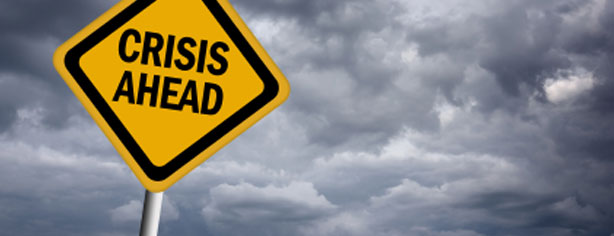 From crisis comes lessons learned…hopefully.
From crisis comes lessons learned…hopefully.
The recent devastation in Texas, Florida, and the U.S. territory of Puerto Rico caused by Hurricanes Harvey, Irma, and Maria, left thousands of homes and businesses destroyed, people displaced from their homes, in desperate need of basic essentials like shelter, food, and water, and sadly, lives were lost.
When you know a crisis situation is coming, you have some time to prepare a communication plan. Authorities had learned from Hurricane Katrina, Hurricane Sandy, and others in recent years. When you apply lessons learned, tweak and adapt along the way, then you have a solid communication strategy.
With each repeat event, more is learned about what needed to be communicated and when. What will you do when crisis strikes? Here are a few important reminders when communicating catastrophic events.
Send Clear Messages. Keep your message clear and simple, and repeat, repeat, repeat. The anticipated devastation and flooding levels in each of these hurricanes reached the public days in advance through meteorologists, the media, FEMA, government leaders, social media, and in-person efforts. The messaging for protection against the elements and evacuation when recommended needs to be clear.
Be Calm Yet Emphatic. When you are the lead spokesperson during a crisis, people look to you for a calming presence. You provide stability and hope. Authorities remained calm yet serious when communicating with residents who were in the path of the hurricane.
Use Multiple Channels. Don’t rely on one communication channel…use all of them. From the most sophisticated electronic communication to the old-fashioned person-to-person, look to all communication channels to assist you in getting your message to the public.
Prioritize Safety and Security. The Number One concern in times of disaster is the safety and security of residents. Agencies were prepared for tens of thousands of residents who were displaced in the hardest hit areas of Texas and Florida. Yet, communication took much longer to reach those in more remote areas of Puerto Rico.
Anticipate Resistance. During crisis situations, you must anticipate some resistance. It’s human nature for people to look at other options if they have them. In Texas and Florida, some residents chose to stay in their homes to wait out the storm. They discovered that was no longer an option and were eventually rescued and evacuated. On the island of Puerto Rico, there were no such options…only to wait out the storm in the safest place possible.
Bring Mobile Devices to the Rescue. The use of mobile phones and social media channels opened up communication more quickly as long as communication towers were in operation. People were able to send out an electronic SOS and also could locate people who needed rescuing more quickly. In times of great devastation, however, lack of electricity makes it improbable or impossible to communicate through any electronic channels. You must then revert to more traditional communication channels, like person-to-person.
Be Timely. Leading up to a disaster, every minute is precious because your message must reach the public post haste, whether it is to take cover or to evacuate. Following the aftermath of a disaster, the use of time shifts to the Number One priority: saving lives. In the case of Puerto Rico, there was not enough attention given to the distribution of life-saving food and water. Many lessons will be learned from that terrible devastation.
Have a Plan B, C, and D. In disasters of epic proportions, relief and rescue workers must make decisions quickly and shift to trying something different. If Plan A doesn’t work, go to Plan B; if that doesn’t work, go to Plan C, then D, and so on. In times of great emergency, you must think of absolutely every potential outcome and be prepared to act swiftly. The clock keeps ticking.
Possessions can be replaced; human lives cannot.
When you are faced with a crisis, draw upon past experiences and apply those teachings to the situation at hand. Hopefully the lessons learned from these recent natural disasters will help leaders better handle crisis communication in the future.
